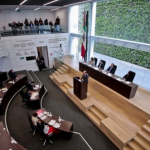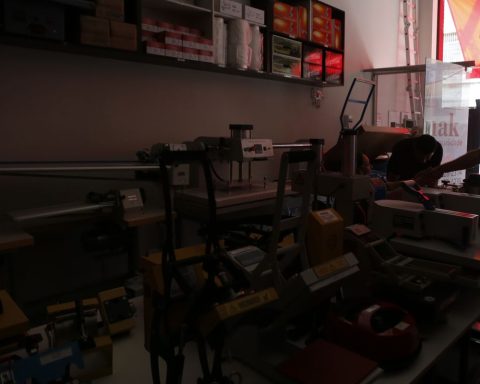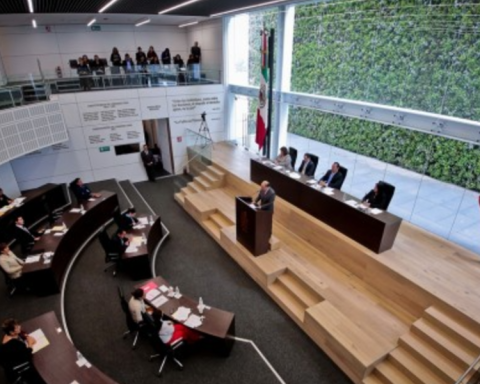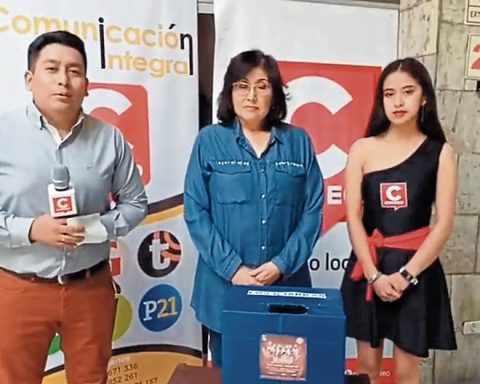Entrepatrias / IP Nicaragua
Since Reyna Ceferino arrived in Costa Rica in 2021 to reunite with her family, she has had to battle hard, not only with the memories of the harsh reality she faced when she was separated from her daughter “Johana”, but also because of her deteriorating state of health.
Ceferino is one of the many Nicaraguan Miskito women who migrated to Costa Rica in recent years, where they have had to face a new family separation due to the intervention of the National Children’s Trust (PANI).
Given the double family separation that Miskito families experience in Costa Rica, the first with exile and then, with the PANI intervention, this institution affirms that when they intervene in cases where they consider the rights of the child or adolescent are violated, they try to “ ensure the best interests of the minor.”
To guarantee the well-being of the child or adolescent, the PANI “separates and protects children from their parents.”
“The PANI does not remove guardianship, guardianship is a legal institution of Family Law, which implies ending the parental authority of parents over their children and that can only be ruled by a judge of the Republic,” the institution responded to the be consulted by IP Nicaragua and Entrepatrias.
Before a “separation of the minor from his or her nuclear family group” occurs, an “intervention process” is carried out preventively, the institution stated. “It is not until it is identified that fundamental rights are being violated that a separation is considered (…) The PANI will never seek a total disintegration of the family,” they noted.
According to PANI, this institution has addressed situations related to the consumption of liquor, drugs, sexual abuse, domestic violence, care neglect, improper relationships, educational exclusion and teenage pregnancy.
Three cases of Miskito families
The institution reported that “there is no specific report or count” of cases that have to do with Nicaraguans, because “many of the services are given without being clear about the nationality of the person.” However, taking into account the service area of the local offices, “it is an important number.”
However, they affirm that this year they have attended to three cases of indigenous Miskito families. *
“The maximum period that the institution can give to remain under protection is six months, however, this period can be extended for the benefit of the minor,” states the PANI.
Extending the period of separation has to be endorsed by a “family judge,” the institution stated.
The reality of the displaced
Bersilia Alfred arrived in Costa Rica five years ago and recognizes that, sometimes, single mothers build “little ranches” in the “precariat” areas, as spontaneous settlements are known in Costa Rica, because they “cannot pay” the rent. a house It is precisely this survival action that puts them in the PANI’s sights.
“Some people had their children taken away from them, but they were already given to them, for the same reason. Because, sometimes single mothers come and can’t afford houses,” said Alfred, a Miskito woman who lives in San José.
An indigenous leader added that “there are other cases of families from whom PANI has taken their children under the argument that they do not have the conditions for their adequate care and development,” he stated.
A sociodemographic and economic diagnosis prepared through a survey of 670 people from the indigenous and Afro-descendant population of the Mosquitia of Nicaragua, who make up 309 households settled as migrants and exiles in Costa Rica, revealed that the majority live with less than the Costa Rican minimum wage; less than 358,000 colones a month. That is equivalent to about 710 US dollars, in a country where the average income is 450 dollars and the cost of the basic basket is around 122 dollars per person.
These families are settled mostly in the metropolitan area of San José, in Purral de Guadalupe, Alajuelita, La Carpio and Pavas.
“There are particular situations in which the entire family migrates, and this is related to the level of exposure to situations of violence. Due to fear, the entire family may be in danger, which is also an indicator of family disintegration,” explained one of the researchers.
The researcher considers that we should look at the “inter-institutional mechanisms that PANI has with other Costa Rican institutions” to analyze family situations that have more to do with economic issues than abuse or lack of protection.
Indigenous and Afro-descendant families who arrive in Costa Rica undergo a radical change in their lives. In addition to the language barrier, they must get used to other life dynamics. The migration process forces them to adapt to new socioeconomic and cultural contexts.
“This change implies, among other things, the transformation of their livelihoods. Attachment to the land has a different meaning,” explained an official from the Observatory of Indigenous and Afro-descendant Peoples of Nicaragua (Opianic).
UNHCR displacement monitor
For UNHCR, the UN Refugee Agency, the number of displaced people in Costa Rica is higher. Since 2018, more than 317,000 Nicaraguans fled to this country in search of international protection, due to the “continuous deterioration of the sociopolitical and Human Rights situation.”
“This has significantly affected vulnerable communities, including indigenous and Afro-descendant peoples, who have little or no representation in decision-making in their country of origin,” UNHCR reported.

This international organization confirmed that “it is aware of several causes that have driven the forced displacement of indigenous Miskitu people to Costa Rica.”
Although the UN Refugee Agency avoided providing information on specific cases, to alleviate the vulnerabilities faced by displaced people, it “supports with technical cooperation” the Government of Costa Rica in the response it provides to people with “rehabilitation needs.” international protection”.
With the PANI, the UN Agency complements the “efforts to protect and include refugees” and through its partner agencies it has “protection services for children and adolescents, as well as psychosocial support services and legal guidance.” .
The legal shield of indigenous communities
International organizations such as the Center for Justice and International Law (Cejil) consider that there is a robust legal framework that protects the rights of indigenous communities.
“Under international law there is a basic principle, which is the principle of equality and non-discrimination,” says Gabriela Oviedo, coordinator of the human mobility team at Cejil.
This legal framework must “govern state actions against indigenous populations,” Oviedo explained.
This protection framework includes instruments such as the American Convention on Human Rights, the American Declaration and the conventions of the International Labor Organization (ILO), which guarantee fundamental collective rights. Specifically, ILO Convention 169 obliges states to “guarantee certain territorial rights, carry out prior consultations, protect their languages, traditions and organizational systems.”
Related news: Miskito mothers in Costa Rica: surviving in exile and facing the terror of losing their children
According to Oviedo, for Costa Rica these treaties represent binding obligations that seek to preserve the cultural identity of indigenous communities, recognizing their particularities and avoiding any form of discrimination or reproduction of racist stereotypes.
“It is essential to understand that these communities are transnational, their territories are not limited to political borders,” Oviedo emphasized.
Protection must go beyond national frameworks, recognizing their experiences, their organizational systems and their right to preserve their cultural traditions, Oviedo believes. The specialist warns that any analysis or public policy that does not consider these principles could be reproducing “racist patterns or discriminatory interpretations” expressly prohibited by international legislation.
In a foreign land, these displaced families fight a silent battle to keep their ancestral traditions alive. Between gratitude for the refuge they found and the weight of daily obstacles, their hearts are divided between two worlds. Without downplaying the importance of their ancestral traditions, the first battle in these stories, for these mothers, seems to be to have a decent roof, food and their children at home, to work so that their children are not taken away from them, to be able to begin to rebuild a life. in a foreign country.
Voices of denunciation like Reyna’s emerge as witnesses of a shared pain, in which migrant Miskito women interweave their stories with those of hundreds of indigenous and Afro-descendant Nicaraguan families who, on Costa Rican soil, try to rebuild their lives, without giving up. to the roots that define their identity and trying to know the rights that assist them in a foreign land.


















